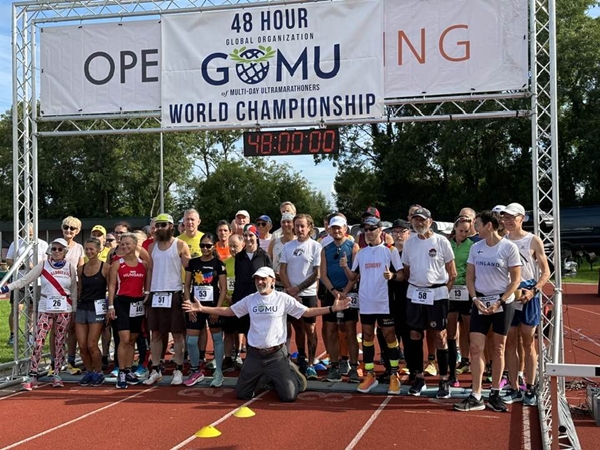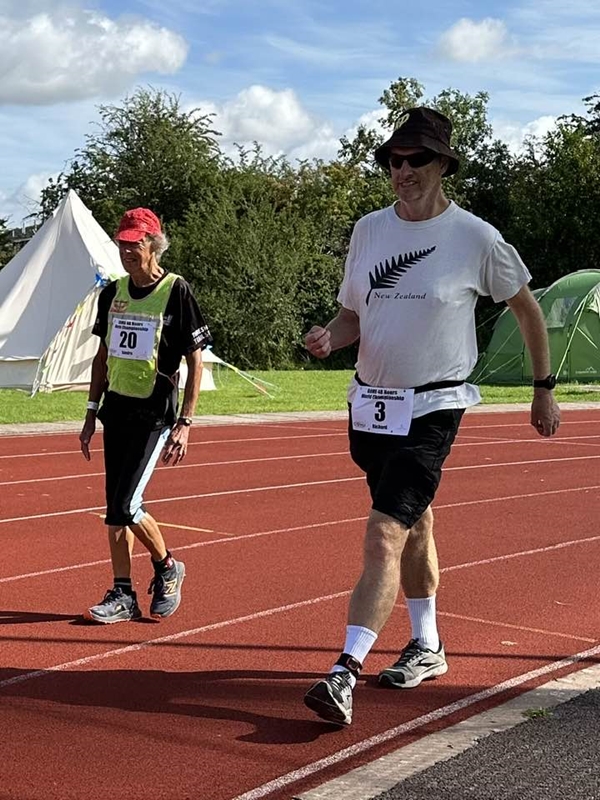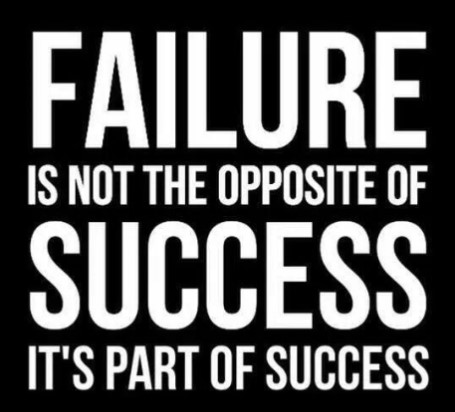I’ve been avoiding writing this race report but if I don’t do it now, I might never write it. It’s already been five weeks since the race and the painful memories are still fresh in my mind. Painful enough for me to seriously consider giving up the sport that I enjoy so much.
When I planned my races for this year, I had one ‘A’ race – the 6 jours de France in April and that was it. 100% of my efforts, both mentally and physically, were focussed on that one race and I wasn’t prepared to even think about anything else until after the race.
Once that race was over, I decided my second ‘A’ race for 2023 would be the GOMU (Global Organisation of Multi-Day Ultramarathoners) 48 hour world championship race, mainly because the race was in Gloucester making travel relatively easy, and also because I have never achieved what I think I’m capable of over 48 hours.
Timed races are exactly that – races that finish exactly x hours or days after they start. The idea is to run (or in my case, walk) as far as possible in that amount of time. They are usually held on short circuits, mostly between 400 metres (a lap of an athletic track) to 1 or 2 kilometres. The Gloucester race was on a 400 metre track.
I’ve done at least five 100 mile/24 hour races on athletics tracks without any problems, and apart from the likelihood of some hallucinations during the second night, I had high expectations for the race. My ‘A’ goal was to walk 200 miles (322km) which would have been a world class walking performance and would exceed my 2018 48 hour PB of 178 miles (278km) significantly.
I have only competed in two 48 hour races. Royan, France in October 2018 where we had summer for the first 24 hours followed by torrential side-ways rain for the majority of the next 24 hours, and Athens in 2020, just before lockdown in which I was under-prepared and ended up with a disappointing 211km.
My ‘B’ goal, if 200 miles was unattainable, was 300km which would beat the current Oceania area 48 hour walking record set earlier this year by Australian, Joffrid Mackett.
But it wasn’t to be.
The race:

I had a good first day, covering 170.4km in the first 24 hours. I had hoped for 175km which would make day 2 a little easier, but another 152km should be possible, I thought. It was a hot day on an exposed track with no shade, but as I usually do in hot weather I wore a cotton t-shirt which I kept wet, and during the afternoon I also wore my white arm sleeves and a buff around my neck, which I also kept wet.
The short story though, is that I only lasted another eight hours, one of which was off the track for medical treatment on my blistered feet followed a few laps later by an attempt to sleep, before dropping out at 32 hours (6pm) because I couldn’t face the idea of walking through a second night at the slow pace that I was struggling to maintain.
My average lap times started to slow soon after passing 24 hours, and with that I started to suffer mentally – I couldn’t get my positive attitude back and the area under the front of both feet, on the outside (not the ball of the foot) was also starting to blister and I was really just going through the motions.

I was actually doing OK in the race. Of 58 starters, I was in 13th place at 24 hours and as the day progressed I moved up into the top 10. Not bad for a walker in the ‘running’ World 48 hour Championship!
If I had had a positive mindset, I would have been telling myself that whilst I’m slowing down, others are slowing more than me, and I would have been getting positive energy from that. But I just wasn’t interested.
When my feet got more and more painful a positive mindset would have told me to take some painkillers and change my shoes – but I didn’t.
I eventually stopped to visit the medical tent at 29 hours (201km) but by then it was too late. The medical staff were actually no use at all. They were NHS staff not familiar with ultra-distance racing, and they refused to drain my blisters because they “weren’t working in a sterile environment”. Give me Maxine Lock (the awesome medic in races organised by Challenge Running) or my friend Suzanne Beardsmore (a former nurse who has drained my blisters many times) any time – someone who understands what is required to fix an athlete’s feet and get them out on the track again.
Instead, they suggested that I soak my feet in ice-cold water and have a rest. Being tired and looking for any excuse to stop, I stayed in the medical tent soaking my feet for 20 minutes before hobbling down to my bag to use my own ‘medical equipment’ (a needle, cloth and tape) to drain and patch my blistered feet.
The break hadn’t been good for me, mentally or physically, and I walked at an average of only 4 ½ minutes per lap for the next hour before deciding that maybe a short sleep would help. The 20 minute powernaps I had during the six-day race in April had worked well, but I found I couldn’t drift off to sleep. It was now 5:30pm and I decided to give up on any attempt to sleep and start walking again, but now I was even slower.
And that is when I made my biggest mistake. I got my phone out and checked whether there were any trains going back to London that night. There were. And that was it. I finished my race at the end of the next lap, just before 6pm, packed up, went and had a shower and caught a taxi to the railway station.
After the race:
I’ve dropped out of races in the past and whilst dropping out always seems like a good idea at the time, usually I realise afterwards that I could have finished. If only I had persevered and pushed through the bad part.
This time, I was in such mental pain after the race that I couldn’t even think about it for the first two weeks, and I seriously contemplated giving up on the sport and sitting on the couch eating potato crisps and drinking Coke for the rest of my life.
In reality, I should never have done the race. I pushed myself so hard (mentally) during the six-day race in April that I’ve hardly done any training since. Definitely no structured training. Therefore I wasn’t physically ready to walk for 48 hours at the pace I wanted to walk, and I don’t think I was mentally ready for a 48 hour race either.
For me, having now completed 44 walks of 100 miles or further, a 48 hour race is like an 800 metre race for runners. In an 800m race the runner starts off at close to 400m pace and tries to hold on through the second lap as best they can. Whereas in a 1,500 metre race they start of at a more conservative pace.
For the 48 hour race, to achieve my goal, I needed to walk at close to maximal effort for the first 24 hours and then hold on the best I could for another 24 hours. Whereas in a six-day race (my equivalent of a 1,500m running race) I start off at a more conservative pace.
To do this (a 48 hour race) requires serious mental strength – to keep pushing the pace when exhausted and in pain. And I didn’t have that mental strength.
And that brings me through to today. I haven’t done any exercise at all for five weeks. For the first two weeks after the race I thought I was finished with the sport. I couldn’t face the idea of competing in another multiday race, and the idea of training for next year’s six-day race in April was terrifying.
Even now, I don’t know how I can get back that positive mental attitude that I need, but I am starting to miss the exercise and miss my long Saturday walking adventures.
A couple weeks ago I finally entered the 2024 edition of the 6 jours de France. The organisers had posted on facebook that the bungalow accommodation was already 50% full and I do want to have another attempt at a big 6-day distance. So I entered the race.
This week the EMU six day race in Hungary is in progress, and next year that will be the GOMU 6-day world championship. I would like to do that too perhaps.
I’m planning on taking another two weeks off before I resume training, and will slowly get back into it so that I’m ready to start serious training again in January.
Lessons learned:

I don’t know where to start, but this is a bullet point list of some of the things I have been thinking about over the last five weeks:
- Don’t think about how far you have to go until you are near the end.
I’ve learnt over the years that until you have covered at least 2/3rds of the race distance/time, you are still just warming up. During the ‘warm-up’ just focus on the here and now. - If you haven’t done the training, don’t expect the results.
This isn’t to say don’t enter the race, but enter it with appropriate expectations regarding what can be achieved based on recent training. - If/when I next attempt to achieve something big, I will take a support crew.
Support crews do much more than help out with feeding. For a start, if they have given up their time to help you, you will be less likely to give up. - Ring your wife!
I purposely didn’t ring Ruth when I was thinking about dropping out because I knew she would tell me not to. I rang her once I was on the train. - Take care of your feet.
Foot care during a race is more important than almost anything else. On this occasion, if I had stopped earlier to deal with my foot pain, while I still had a relatively positive mindset, then the foot pain (blisters) may not have got to the stage where, even with a negative attitude, I decided to stop. - Plan to sleep.
In races of less than 36 hours I don’t sleep because you are unlikely to make up the time lost in the remaining hours, but any race that goes through two nights probably means that a powernap will be required. I went into this race intending on not sleeping and therefore I didn’t have a sleeping bag or anywhere I would be able to sleep comfortably. In my first 48 hour race in 2018 I didn’t need any sleep, but it would be better to plan to sleep and not sleep, than to plan not to sleep and then need to find somewhere suitable to sleep when already extremely tired.
The positives:
It wasn’t all doom and gloom. I walked my 21st sub-24 hour 100 miler and my 7th best time. And my 24 hour split of 170.4km was my 8th best 24 hour distance. I also walked 28:50:45 for 200km which is both a new New Zealand M55 record and a new NZ track record, giving me both the road and track NZ records plus the M45, M50 and M55 records.
Note: M55 and NZ track records will be subject to ratification (there was a walking judge present although officially it was a running race).
Injuries:
Apart from being totally exhausted mentally and needing this long break, I’m using this period to try and get over some niggly injuries – without much success unfortunately. The injuries aren’t serious but they make training a little less enjoyable. I have four injuries at the moment:
- The top of my left foot has been sore on and off since the six-day race last year. I had physio treatment on the foot for months last year without any success. The discomfort/mile pain comes and goes but often wakes me in the middle of the night.
- Both calf muscles are very tight and have been for several years. Stretching doesn’t seem to make any difference and when I wake up in the morning I have to be very careful not to stretch or move my legs suddenly as doing that results in cramp in one or both of the calf muscles.
- Outside of left knee is a little numb at times.
I don’t know what this is, but sometimes if I scratch the outside of my left knee I can’t feel anything more than a light touch, whereas normally I would feel my fingernails. I don’t know when this started. Probably only in the last few months. - Top of left hamstring/glute.
Where the left hamstring connects to the bone in my bum area is probably the worst of the injuries. It hurts almost constantly except for when walking once warmed up. When I say it hurts, it is just uncomfortable and there is definitely something not right. It hurts sitting, standing and even lying down, but once I have been walking for an hour or more and am properly warmed up, I no longer feel it.
This problem started early this year and I’ve been seeing an osteopath working on resolving this problem, but no success.
With all these issues, which could just be due to getting old and perhaps walking a bit more than the average person, I’ve recently invested in a circulation booster which I use twice a day for 30 minute each time – while eating breakfast and dinner. I don’t know that this is making any difference either, but I’ve only been using it for two weeks and these injuries have been there for a while.
What’s next?
When I finished April’s six-day race I really felt that I could improve on my 711km (442 miles) substantially and perhaps become the first person in modern race-walking history to walk 500 miles (805km). That will require exceptional preparation, both physically and mentally, and I hope to get back into shape by Christmas so that I can start training for that race in January.
I won’t be doing any serious races before April but there is the possibility that I might use one or two races as a part of my training.
So potentially this might be my last race report until April. But I’m sure now that it won’t be my last.
Thanks for your detailed report. This is your road map forward. I chuckled in Lessons learned 😀Ring your wife.
Incorporating rest at the right time is key and the right time is probably earlier than we think.
That doesn’t sound entirely different to my (admittedly, far worse performance) experience at the TR250 this year. We eventually concluded that was probably a virus. My sleeping heart rate was elevated for 10 days afterwards, as was my breathing rate, and my HRV was very low compared with normal. I felt fine up until I started to push and then I felt awful. Tired, emotional, defeatist. Do you wear a sleep tracker?
Thanks James. I don’t wear a sleep tracker as such, but my Garmin does track my sleep. I don’t monitor it though.
Great report mate, looking forward to watching your relentless progress in the next 6 day event. 800 plus would be awesome! Funnily enough I was doing the sums during a walk yesterday and landed on around that total as a stretch (massive stretch as I haven’t tried anything beyond 48hrs) goal next year. Good luck!
Thanks Joffrid
I thought six days would be ‘easy’ until I did my first one in 2016. But with each one I learn more about myself and the race, and I think 500 miles is a possibility providing all my training goes well and we have good weather for the race.